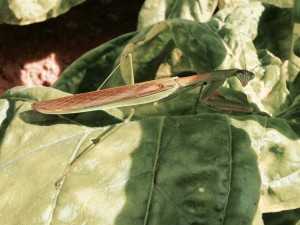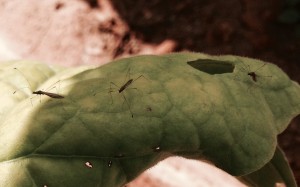Tobacco Insect Scouting Report, September 18 2015
go.ncsu.edu/readext?376292
en Español / em Português
El inglés es el idioma de control de esta página. En la medida en que haya algún conflicto entre la traducción al inglés y la traducción, el inglés prevalece.
Al hacer clic en el enlace de traducción se activa un servicio de traducción gratuito para convertir la página al español. Al igual que con cualquier traducción por Internet, la conversión no es sensible al contexto y puede que no traduzca el texto en su significado original. NC State Extension no garantiza la exactitud del texto traducido. Por favor, tenga en cuenta que algunas aplicaciones y/o servicios pueden no funcionar como se espera cuando se traducen.
Português
Inglês é o idioma de controle desta página. Na medida que haja algum conflito entre o texto original em Inglês e a tradução, o Inglês prevalece.
Ao clicar no link de tradução, um serviço gratuito de tradução será ativado para converter a página para o Português. Como em qualquer tradução pela internet, a conversão não é sensivel ao contexto e pode não ocorrer a tradução para o significado orginal. O serviço de Extensão da Carolina do Norte (NC State Extension) não garante a exatidão do texto traduzido. Por favor, observe que algumas funções ou serviços podem não funcionar como esperado após a tradução.
English
English is the controlling language of this page. To the extent there is any conflict between the English text and the translation, English controls.
Clicking on the translation link activates a free translation service to convert the page to Spanish. As with any Internet translation, the conversion is not context-sensitive and may not translate the text to its original meaning. NC State Extension does not guarantee the accuracy of the translated text. Please note that some applications and/or services may not function as expected when translated.
Collapse ▲We observed both a decrease in flea beetle populations and an increase in predators this week at our remaining on farm site. Only two plants had signs of aphids, but neither had large enough populations to be considered infested. We saw quite a few stiltbugs this week and even a praying mantis on one plant. Plants that have aphid populations often have several stilt bugs, which are predatory on aphids. We have noticed that trend at this site in recent weeks and although we aren’t seeing many aphids at this point, the stilt bug populations are still thriving.
We also have not seen hornworms present in fields recently. While it is possible for some late season caterpillars to be present in fields, most are preparing to pupate and overwinter in the soil. Also, we are seeing a few grasshoppers, but none were found on plants at any of our stops.

Praying Mantis. Photo: Jeremy Slone
Piedmont 2
Scouting Report, Piedmont 2 – Grower Standard Field
| Insect observation | No. aphid infested plants | Flea beetles per plant | Percent tobacco budworm infested plants | Hornworms per plant | Percent cutworm damaged plants | Other insects |
| Treatment needed? | 0 – No treatment | 0.66 flea beetles/plant– No treatment | 0% infested – No treatment | 0% – No treatment | 0 – No treatment |
Scouting Report, Piedmont 2 – IPM Field
| Insect observation | No. aphid infested plants | Flea beetles per plant | Percent tobacco budworm infested plants | Hornworms per plant | Percent cutworm damaged plants | Other insects |
| Treatment needed? | 0 – No treatment | 0.5 flea beetles/plant– No treatment | 0% infested – No treatment | 0% – No treatment | 0 – No treatment |
More information
Tobacco insect scouting methods – Tobacco Growers Information Portal



